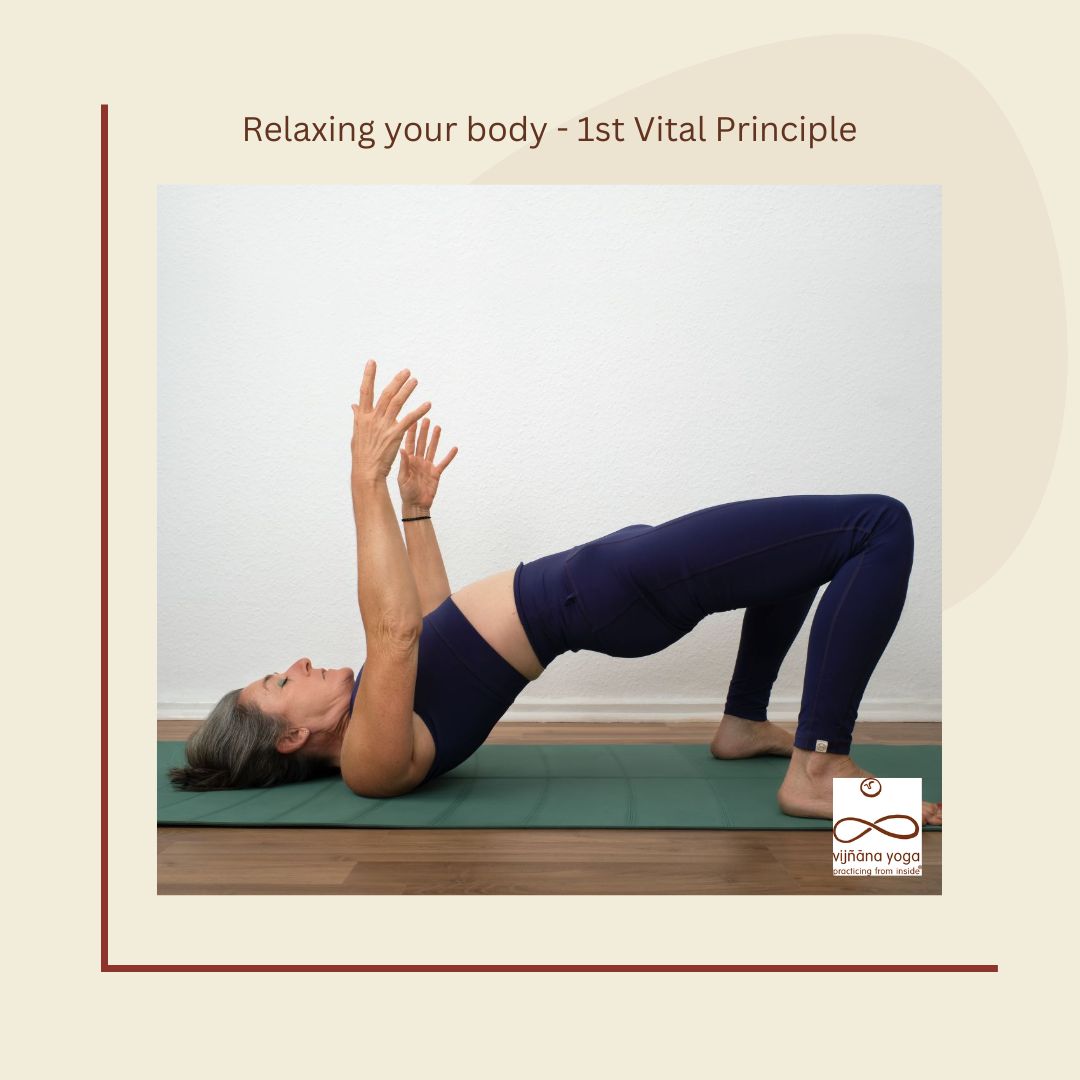What is relaxing the body?
Relaxing the body means releasing tension. It is the first and most important out of seven Vital principles in the practice of Vijñāna Yoga. Whether practicing Sitting Meditation, Pranayama (Breath Control) or Asana (yogic posture), you do only what is needed. A good practice is rooted in the ability to truly relax.
Why is it difficult to relax the body?
The true nature of the body is a relaxed state. Over the years, the body accumulates emotional and physical stress and stores it in various parts of the body such as the shoulders, neck, lumbar spine and hip joints until this becomes a real problem. We need to learn to let go of these old patterns. In relaxing or letting the body do nothing, the tension is not reinforced by external observation and affirmation. Rather, it is the awareness that comes from within that gradually releases, unfolds and unwinds the tense parts so that air and space can return.
Relaxing does not mean collapsing!
Thus it is easy to understand the idea behind it, but surprisingly difficult to actually implement it in our practice. Even though many recognize that relaxation is vital, the relationship to it remains unclear and often uncertain. Even established practitioners who value and adhere to relaxation occasionally neglect it as they strive to achieve perfection in a pose.
Relaxation in movement
Before imprinting any Asana on the body, we need to learn to release tension. In the beginning, when we try a new pose, the whole body moves because the pose is not understood or “organized”. In order to relax the body, we need to learn to stack the various parts of the body one on top of each other in such a way, that the force of gravity runs straight and smooth through the entire length of the body and the spine, and all the parts hang easy and free from this line. Otherwise we need to use unnecessary muscle power to keep them up. These parts are the feet, pelvis, chest and head.
Once we are able to integrate relaxation into our yoga practice, all the other principles of a good practice connect with it – quiet mind, intent, rooting. connecting, breathing, and expanding – because they are its true nature. There comes a stage in our practice when we can avoid movements that cause discomfort.
In yoga, the things we do may often look quite strange. But as long as something within the body remains still and stable in the center – connecting to the sacrum or belly – the body is protected. Staying and relaxing in the center becomes our solid base, something we can count and lean on.

How to learn to relax?
The best teacher for learning to relax is a healthy two-year-old child. Children at this age generally have good posture and the ability to relax completely. If we look at their movements and posture and manage to imitate them, we learn to move with a relaxed body!
3 essential tools for relaxation
- Softness – The spine is the queen, always in the mood for silence and stillness. This is one of the secrets of yoga. We want to be as soft as possible, without any effort. Creating this “softness” takes a lot of practice.
- Doing Less – Trying to do as little as possible unnecessary movement in order to move the body from one place to another. The movement has to be smooth and continuous, in the same rhythm, all in the flow, so that this flow calms and focuses the mind.
- Without effort – Even the yogic poses can be done without effort. BUT I can tell you that it requires a lot of keenness to put in as little effort as possible over a long period of time – the keenness to be constantly aware of how you do what you do. Sometimes it helps to remember early childhood, when movement was a new skill we were just discovering. We were so aware of it at every step.
How to cultivate frustration and patience?
If we sometimes feel confused, insecure or even deeply frustrated in practice, this is not necessarily a bad thing. Only when we understand that we don’t understand, we start to look for solutions. This way, the practice deepens. Each of us needs to appreciate the secrets of our own body and work out our own personal blockages. This can be fascinating, but frustrating at the same time. Be aware of this and avoid forcing this process.
I hope my Vijñana Yoga perspective helps you better understand the importance of a relaxed body in your own practice. I’d love to hear about your adventures in the comments.?
Take care and stay safe.
Sandra
Book recommendations on the topic:
Sen-Gupta, O. (2012) – The heart of practice – Understanding Yoga from Inside
Sen-Gupta, O. (2013) – A little book of yoga
Hollemann, D. (2009) – Dancing the flame of life


